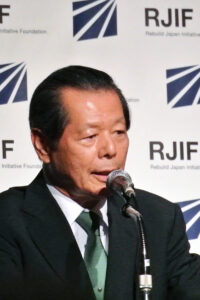
“Creating a society in which all women shine” is one of the defining policies of Abenomics. Thanks to the measures introduced under the policy since the Abe administration’s establishment in December 2012, some one million women have newly entered the labor market and the number of female corporate board members has increased by approximately 30%. Women’s social advancement is one of the most important challenges facing Japan today. Traditionally Japanese society has held the view that mothers should stay at home and take care of the family’s children rather than continue or seek employment, and even today about 60% of women quit their jobs when they get married or give birth to their first child. Women tend only to return to the labor market once their children have grown up and left home, a tendency revealed in the downward portion of the so-called ... ... [Read more]

